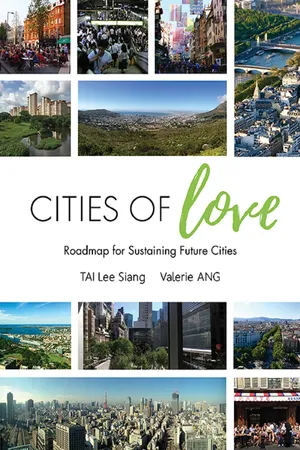
This is a test
- 328 pages
- English
- ePUB (mobile friendly)
- Available on iOS & Android
eBook - ePub
Book details
Book preview
Table of contents
Citations
About This Book
Earth's environmental problems are far from being resolved. A large part of these are due to ever-growing cities. Despite more efforts made to improve cities, it has been difficult to change cities. One of the fundamental reasons is that people are not
Frequently asked questions
At the moment all of our mobile-responsive ePub books are available to download via the app. Most of our PDFs are also available to download and we're working on making the final remaining ones downloadable now. Learn more here.
Both plans give you full access to the library and all of Perlego’s features. The only differences are the price and subscription period: With the annual plan you’ll save around 30% compared to 12 months on the monthly plan.
We are an online textbook subscription service, where you can get access to an entire online library for less than the price of a single book per month. With over 1 million books across 1000+ topics, we’ve got you covered! Learn more here.
Look out for the read-aloud symbol on your next book to see if you can listen to it. The read-aloud tool reads text aloud for you, highlighting the text as it is being read. You can pause it, speed it up and slow it down. Learn more here.
Yes, you can access Cities of Love by Lee Siang Tai, Valerie Ang in PDF and/or ePUB format, as well as other popular books in Scienze sociali & Sociologia urbana. We have over one million books available in our catalogue for you to explore.
Information
Topic
Scienze socialiSubtopic
Sociologia urbanaTwelve Ingredients
This is probably the most important page of this entire book. We have searched our memories on cities and assimilated them into 12 ingredients that we feel are the most important in creating a city of love that we can cherish.
Through these ingredients, we believe that social, economic, and environmental sustainability can be achieved to a significant extent. Again, we remind you that it has to be a public, private, and people sector collaboration that will see the greatest results. We have listed down the 12 ingredients below; starting with which we feel will have the greatest instant impact on societies.
1. Family Oriented City
2. Less Car City
3. Garden City
4. Interactive City
5. Innovation City
6. Shopping City
7. Sporty and Healthy City
8. Edible City
9. Smart Device City
10. Happy City
11. City of Hope and Honour
12. City of Romance
In the following chapters, we will address some blind spots and provide insights on each of these ingredients as well as suggest possible models for implementation. There are other ingredients that we have in mind but we feel that these 12 are the most relevant and pertinent right now. These are meant to be applied accordingly to different extents as each city has its own specific contexts.
We hope this inspires you to do something to show your love for your city.
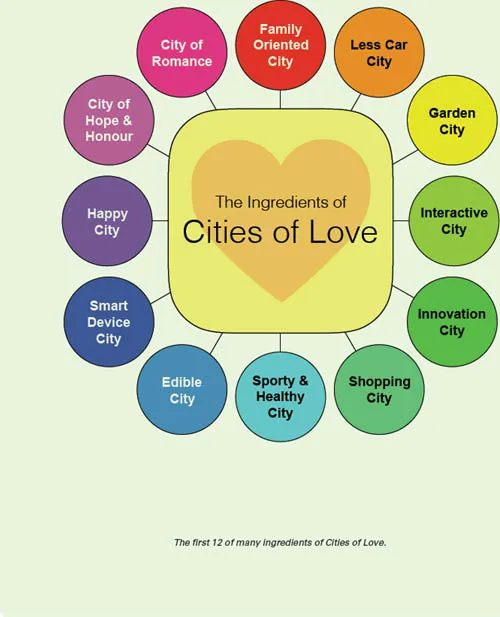
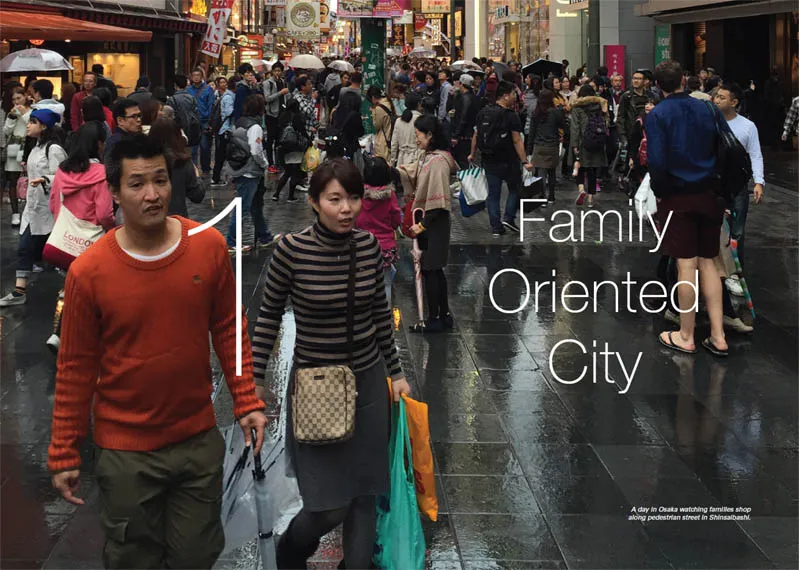

Families spending time together on side walk of Champs-Élysées.
Family—A Forgotten Word
Just how much are families considered in the planning of our cities?
We once asked an Italian friend of ours: “Why do Italians believe in Siesta?” We expected that the answer would be “a planned rest in mid-day helps one to last longer in the day.” Much to our astonishment, he informed me that the longer than usual lunch break has many other benefits.
Firstly, he welcomes an opportunity to go home for lunch with his family. Physical presence builds relationships, and working late at night often means the family will be asleep when he returns. Secondly, this enables him to run errands during the day. This would prove impossible particularly with public services if the opening hours of these coincided with his work hours. His simple answer startled me into questioning some of the urban truths we live by today.
Truth No. 1: City Dwellers Do Not Eat Lunch at Home
Many are not able to spend many lunches with their family while working during the week. Most middle-income employees are not likely to live near their workplaces in city centres where residential properties are extremely expensive. The need to travel great distances between work and home provides little incentive to have lunch at home.
Truth No. 2: City Dwellers Do Not Spend Sufficient Time with Their Family
The commonly accepted idea of separation between work and home naturally increases the distance and reduces the time that different members of a family can spend together.
Truth No. 3: City Planning Today is Not Developed for Families
The family is the foundational unit of any society. Yet locating families in close proximity to each other despite their different activities has not been a primary objective of city planning.
Family Torn Apart
Modern family unit cannot share hardship easily.
During the agricultural age, family was considered the basic unit for business and succession. Families sustained their livelihood from one generation to another through procreation. The hardship faced individually by family members is probably not less than that of a farming family collectively. By spending more time with each other for mutual encouragement and collaboration, they can be helped to function and contribute to society more effectively.
As modernisation takes place, the setting changes from rural farmland to the high density environment that is the city. In doing so, we have moved away from a family-based economy to an individual-based economy. As family cease to work as a single unit, individual members take on the challenge of meeting the future needs of society. The downside is: modern family unit cannot share hardship easily.
Regardless of the above trend, family should remain highly relevant in modern society and city life. However, city planning generally ignores the importance of family wellbeing, save for the prevention of violence. Commercial consideration takes importance over this primary social engine.
How Did This Happen?
This can be traced back to the Industrial Revolution in the 19th century. When mankind invented the steam engine powered by coal, he invented both a beauty and a beast. It brought power to industrialisation but also made the city a dirty and unsafe place for children and adults at the same time. Child labour was certainly a more widespread problem at that time. A new urban movement introduced zoning, attempting to protect the young and weak by creating safe distances between incompatible land uses.
Although zoning was not intended to be a tool for the separation of families, members end up spending a significant amount of time apart as part of the unintended consequences.
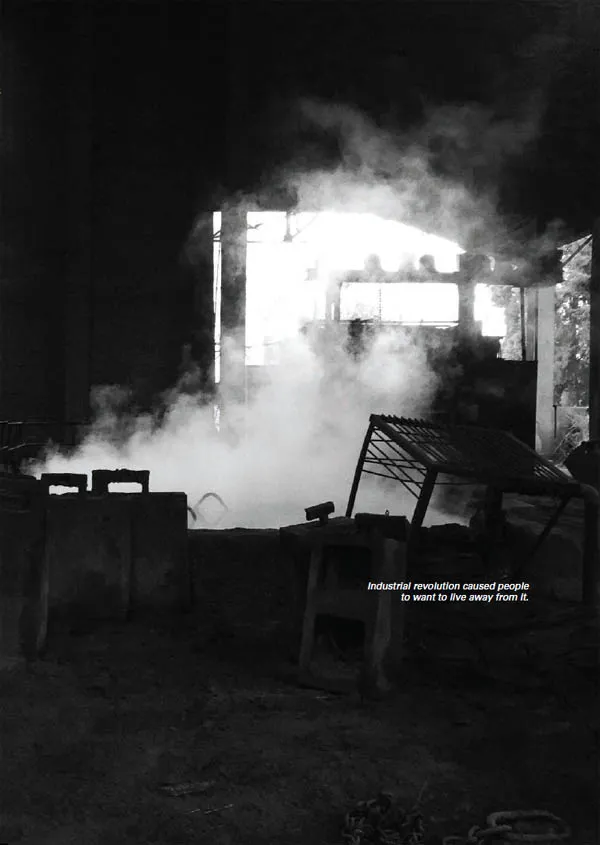
Separation Is Good?
Land Use Zoning
It is not difficult to cluster buildings with a similar function together in order to ensure right use of land. This achieves several functions:
• Efficiency of infrastructure
• Ensuring safety of users
• Concentration of services
• Critical mass of activities
• Ensure appropriate setting for respective users
These are good considerations and have achieved a degree of optimisation from a land use perspective. The direct manifestation of these principles is often typified by the following:
1. Creation of a Business / Financial District
This is often located at the choicest site within a city.
2. Industrial and Pollutive Facilities
Due to safety considerations, these are often located considerably fair distance away from the city centre.
3. Shopping and Entertainment Centre
This is sometimes separated from the city centre to create a distinct destination.
4. Residential Enclave
This is generally distributed further away from the city centre due to lower land costs.
5. Education Facilities
These are evenly distributed within the residential enclave. However, higher level educational institutions are often isolated from everything else.
Now, ask yourself this question: How many cities fit these descriptions? We bet there are many. No wonder more and more of the world’s cities look alike. There are further side-effects…
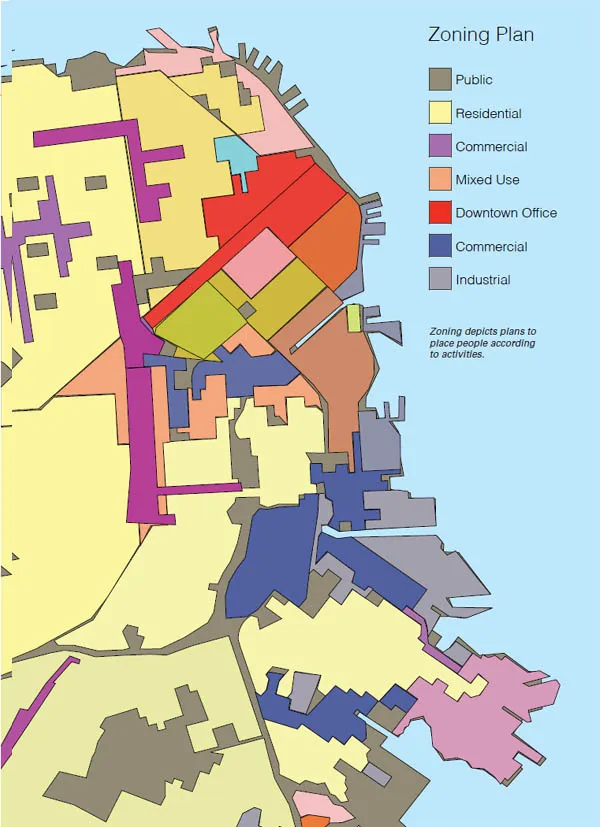
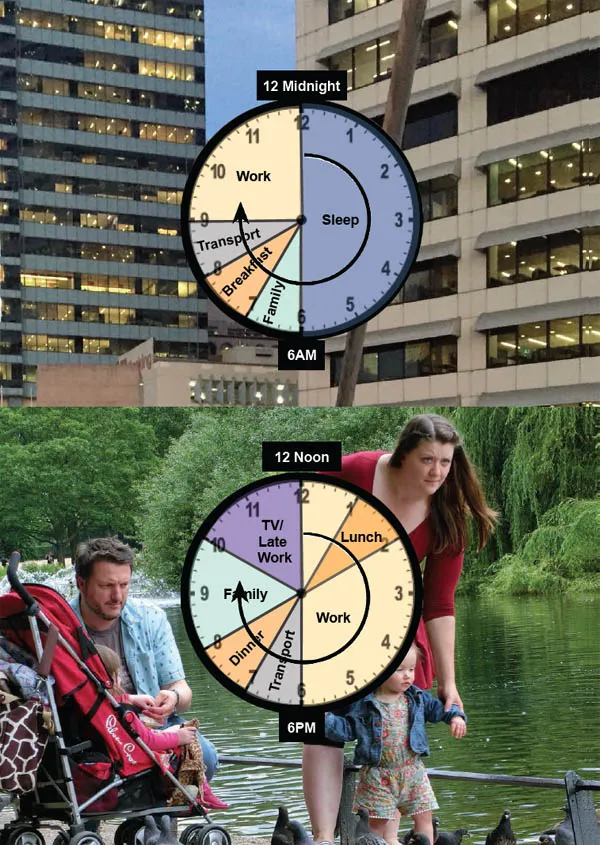
Time for family and work are difficult to balance.
Side Effects of Zoning
How does this add up?
There are many side-effects of zoning. Not all of these are negative but its impact on the family is probably one of the most significant. This is an area not often talked about but we are of the opinion that this can no longer be ignored if societies are to be socially sustainable.
A typical family comprising of working parents and young children has many common needs. It is socially accepted that both parents will need to commute to work to earn an income. Children are likely to have to travel to school and spend time in after-school care. The only time that the family can be together is usually before and after dinner, and before bedtime. How does this add up? We think that this would be approximately 3 hours between about 6pm to 9pm.
Every extra hour spent at work will reduce time for family and rest. It is not surprising again to discover that there are other side effects such as common work-induced illnesses and even breakdowns in marriages. Parents often work in locations away from home, which means other parties such as paid caregivers must be enlisted to look after children. There is an accumulative social price to be paid.
We wonder if the world today agrees that the family is still the pillar of our societies. Are we genuinely concerned for the wellbeing of our people? Will we allow urbanisation to dictate the way families should live?
Family Oriented Planning
We often accept working in offices as a way of life.
Photographic im...
Table of contents
- Cover
- Halftitle
- Title Page
- Copyright
- Preface
- Contents
- Brief History of Cities
- Realities of City Living
- Change the World
- Twelve Ingredients
- Cities of Love
- Final Words…For Now
- Bibliography